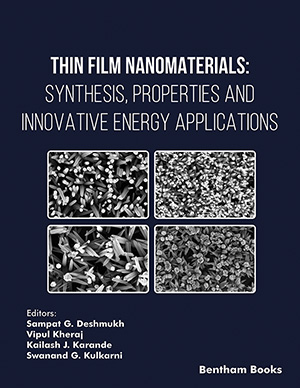
Abstract
Quatiepine, an effective atypical anti psychotic administered as fumarate or hemifumarate salts by intravenous injection shows poor brain uptake due to low partitioning and/or Pgp efflux. In order to improve their brain availability, solid lipid nanoparticles (SLN) loaded with Quetiapine fumarate or hemifumarate were prepared using glyceryl monostearate (GMS), poloxamer 407 and hydrogenated soya phosphatidylcholine (HSPC) as stabilizers–using a hot melt emulsification high- pressure homogenization technique. They were characterized for physical characteristics like particle size, polydispersity (PDI), shape and entrapment efficiency (EE). Fomulation and process parameters were optimized based on particle size, PDI and EE. SLNs with a mean particle size of 101.1 nm were obtained for quetiapine fumarate and 93.6 nm for quetiapine hemifumarate. In vitro drug release study showed the release followed Higuchi kinetics model for both the formulations. In vivo studies showed a significant increase in the percentage of drug reaching the brain when administered in the form of SLN’s as compared to the respective drug solutions and the increase was greater in case of quetiapine hemifumarate salt.
Keywords: Brain delivery, parentral, quetiapine fumarate, quetiapine hemifumarate schizophrenia, solid lipid nanoparticles.
Pharmaceutical Nanotechnology
Title:Formulation and Evaluation of Solid Lipid Nanoparticles of Quetiapine Fumarate and Quetiapine Hemifumarate for Brain Delivery in Rat Model
Volume: 1 Issue: 3
Author(s): Lohan Shikha, Sharma Sumit and Rayasa R. Murthy
Affiliation:
Keywords: Brain delivery, parentral, quetiapine fumarate, quetiapine hemifumarate schizophrenia, solid lipid nanoparticles.
Abstract: Quatiepine, an effective atypical anti psychotic administered as fumarate or hemifumarate salts by intravenous injection shows poor brain uptake due to low partitioning and/or Pgp efflux. In order to improve their brain availability, solid lipid nanoparticles (SLN) loaded with Quetiapine fumarate or hemifumarate were prepared using glyceryl monostearate (GMS), poloxamer 407 and hydrogenated soya phosphatidylcholine (HSPC) as stabilizers–using a hot melt emulsification high- pressure homogenization technique. They were characterized for physical characteristics like particle size, polydispersity (PDI), shape and entrapment efficiency (EE). Fomulation and process parameters were optimized based on particle size, PDI and EE. SLNs with a mean particle size of 101.1 nm were obtained for quetiapine fumarate and 93.6 nm for quetiapine hemifumarate. In vitro drug release study showed the release followed Higuchi kinetics model for both the formulations. In vivo studies showed a significant increase in the percentage of drug reaching the brain when administered in the form of SLN’s as compared to the respective drug solutions and the increase was greater in case of quetiapine hemifumarate salt.
Export Options
About this article
Cite this article as:
Shikha Lohan, Sumit Sharma and Murthy R. Rayasa, Formulation and Evaluation of Solid Lipid Nanoparticles of Quetiapine Fumarate and Quetiapine Hemifumarate for Brain Delivery in Rat Model, Pharmaceutical Nanotechnology 2013; 1 (3) . https://dx.doi.org/10.2174/22117385113019990005
| DOI https://dx.doi.org/10.2174/22117385113019990005 |
Print ISSN 2211-7385 |
| Publisher Name Bentham Science Publisher |
Online ISSN 2211-7393 |
Call for Papers in Thematic Issues
Polymeric nanocarriers in drug delivery
Polymeric nanocarriers play a crucial role in drug delivery due to their versatility, and unique properties for targeting and modifying drug release. Their ability to enhance therapeutic outcomes, reduce side effects, and enable the delivery of drugs in a more targeted and controlled manner made them popular in the last ...read more
 25
25
- Author Guidelines
- Graphical Abstracts
- Fabricating and Stating False Information
- Research Misconduct
- Post Publication Discussions and Corrections
- Publishing Ethics and Rectitude
- Increase Visibility of Your Article
- Archiving Policies
- Peer Review Workflow
- Order Your Article Before Print
- Promote Your Article
- Manuscript Transfer Facility
- Editorial Policies
- Allegations from Whistleblowers
Related Articles
-
Radiation Therapy in the Early 21st Century: Technological Advances
Current Cancer Therapy Reviews Developments of Polo-like Kinase 1 (Plk1) Inhibitors as Anti-Cancer Agents
Mini-Reviews in Medicinal Chemistry An Efficient Protocol for the Synthesis of new Camphor Pyrimidine and Camphor Thiazole Derivatives using Conventional and Microwave Irradiation Techniques and <i>In vitro</i> Evaluation as Potential Antimicrobial Agents
Current Organic Synthesis Tumour Targeting with Systemically Administered Bacteria
Current Gene Therapy A Review on Hematopoietic Stem Cell Treatment for Epilepsy
CNS & Neurological Disorders - Drug Targets Recent Advances in Heterocyclic Tubulin Inhibitors Targeting the Colchicine Binding Site
Anti-Cancer Agents in Medicinal Chemistry Nanoparticles for the Treatment of Wounds
Current Pharmaceutical Design Role of Moving Average Analysis for Development of Multi-Target (Q)SAR Models
Mini-Reviews in Medicinal Chemistry How Similar are Human Mesenchymal Stem Cells Derived from Different Origins? A Review of Comparative Studies
Current Stem Cell Research & Therapy Review on Computer Aided Breast Cancer Detection and Diagnosis using Machine Learning Methods on Mammogram Image
Current Medical Imaging Bilirubin Chemistry and Metabolism; Harmful and Protective Aspects
Current Pharmaceutical Design An Efficient Cancer Classification Model for CT/MRI/PET Fused Images
Current Medical Imaging Update of QSAR & Docking Studies of the GSK-3 Inhibitors
Current Bioinformatics Carotenoids in Photooxidative Stress
Current Nutrition & Food Science The Potential for Genetically Altered Microglia to Influence Glioma Treatment
CNS & Neurological Disorders - Drug Targets Serpin Regulation of Fibrinolytic System: Implications for Therapeutic Applications in Cardiovascular Diseases
Cardiovascular & Hematological Agents in Medicinal Chemistry Studies on the Biotransformations and Biodistributions of Metal-Containing Drugs Using X-Ray Absorption Spectroscopy
Current Topics in Medicinal Chemistry Single Vial Kit Formulation of Technetium-99m-L,L -Ethylene Dicysteine: Its Characterisation, Biodistribution and Comparison with Commercially Available 99mTc-L, L-EC Kits
Current Radiopharmaceuticals Recent Advances in Fluorescent Probes for Monitoring of Hydrogen Sulfide
Current Medicinal Chemistry Development of Aptamer-Based Nanomaterials for Biological Analysis
Current Molecular Medicine

























